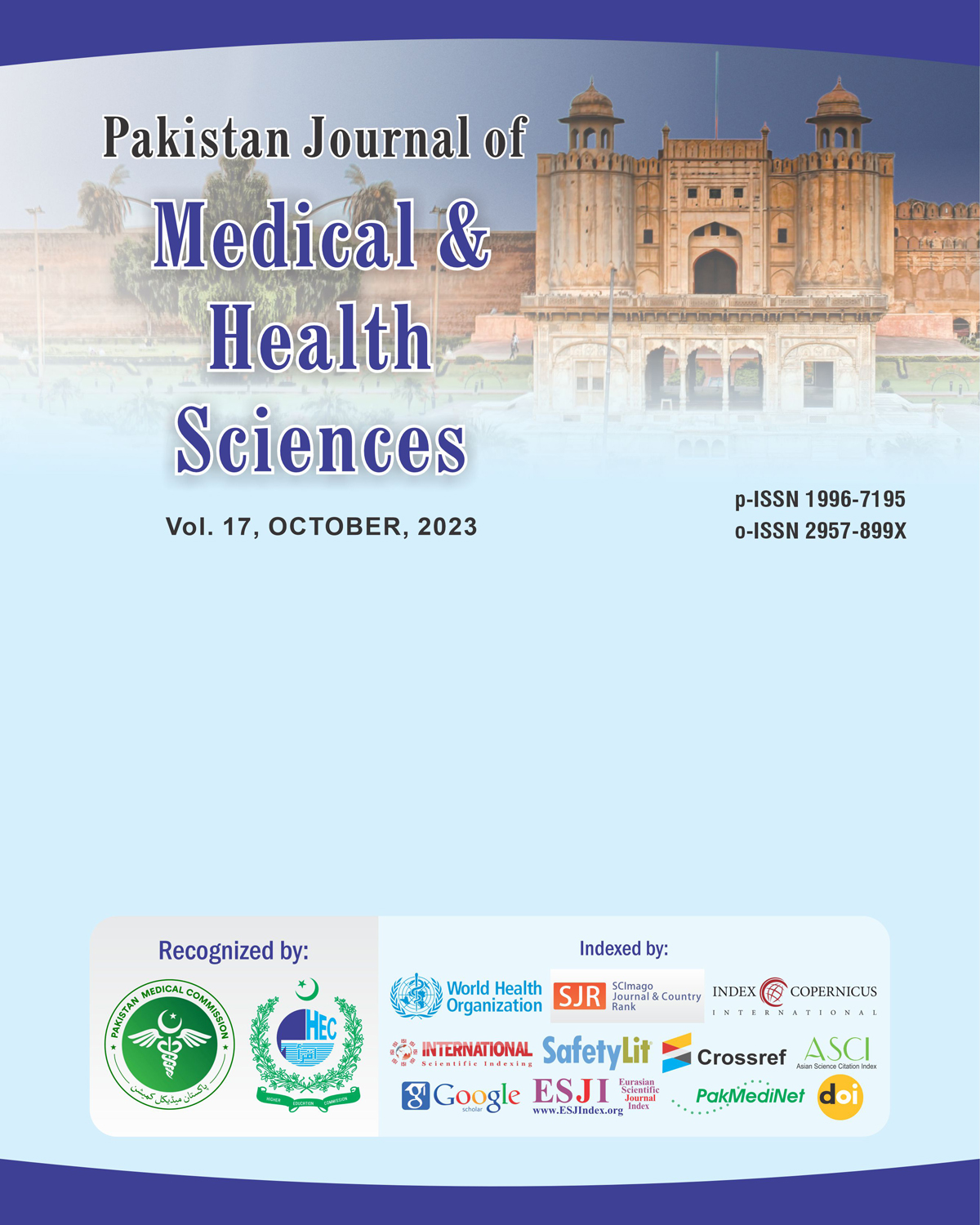Correlation between Lactate-to-Albumin Ratio and Overall Mortality in Critically Ill Cirrhotic Patients with Sepsis
DOI:
https://doi.org/10.53350/pjmhs2023171096Abstract
Introduction: Cirrhosis is a severe liver disease often complicated by sepsis, a life-threatening condition. The lactate-to-albumin ratio (LAR) has been proposed as a prognostic marker in critically ill patients.
Objective: The objective of this study is to find the correlation between lactate-to-albumin ratio and overall mortality in critically ill cirrhotic patients with sepsis.
Methodology: This prospective cohort study was conducted at Lahore General Hospital, Lahore during May 2023 to July 2023 consisted of 105 critically ill cirrhotic patients diagnosed with sepsis, who were admitted to the hospital during the study period.
Results: This study found that non-survivors had significantly higher lactate-to-albumin ratio (LAR) values (1.95 ± 0.6 vs. 1.35 ± 0.5, p = 0.003) and more complications, including respiratory failure (70% vs. 45%, p = 0.01) and acute kidney injury (60% vs. 38%, p = 0.02). Higher LAR was also linked to longer ventilator support (5.5 ± 2.4 days vs. 3.1 ± 1.4 days, p = 0.002) and longer ICU stays. LAR is a significant predictor of mortality and complications in cirrhotic patients with sepsis.
Conclusion: The lactate-to-albumin ratio may serve as a valuable biomarker for predicting mortality in critically ill cirrhotic patients with sepsis. Further prospective studies are required to confirm these findings and integrate LAR into clinical practice.
Keywords: Lactate, cirrhosis, sepsis, mortality, patients, prognosis.
Downloads
How to Cite
Issue
Section
License
Copyright (c) 2023 Muhammad Yasir Younis, Muhammad Faisal Rashid, Zarmast Khan, Javaria Amil, Sadia Noureen, Muhammad Usman Khan

This work is licensed under a Creative Commons Attribution 4.0 International License.


